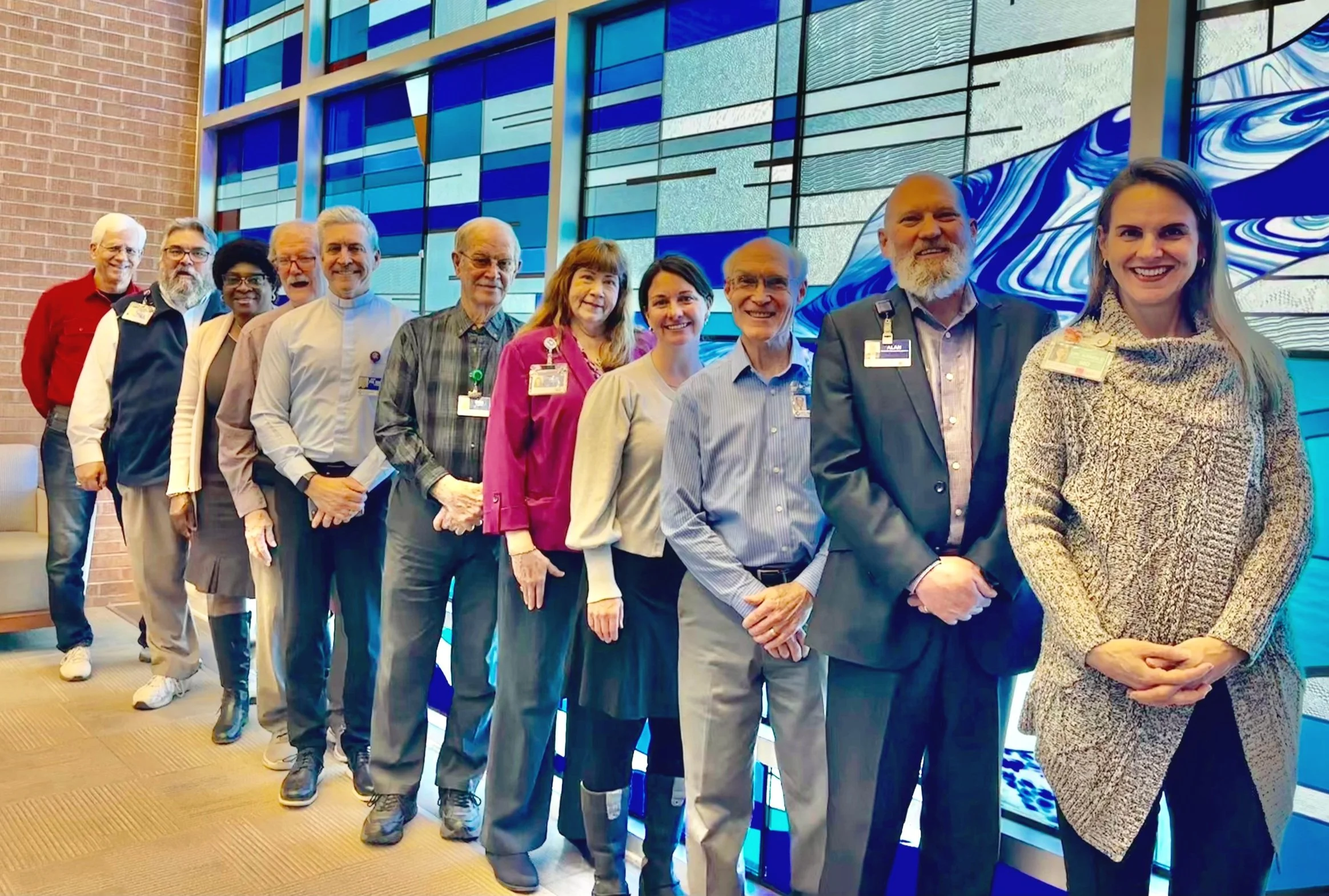Michele Meets: St. Mary’s Spiritual Care Team
I recently enjoyed a delightful meeting with our Spiritual Care team and hospital chaplains. Our conversation helped dispel a few common myths about their work at St. Mary’s, which I’ve shared below.
Pictured left to right: Daniel Terrell, Alonso Kennedy, Margaret Harvey, Lee Wyman, Fr. Brian Mohan, Donald Anderson, Julie Parrish-Fender, Christine Zaums, Bryan Newman, Alan Amos, Michele Arnold
Myth No. 1: The main role of the hospital chaplain is to deliver last rites
The goal of the Spiritual Care department at St. Mary’s is to provide excellent, individualized spiritual and emotional care to every patient, family, and caregiver we encounter. In meeting individuals where they are, in that moment and time, a chaplain seeks to understand what brings meaning, value and purpose to their lives.
When providers understand what really matters to patients, their hopes and fears, it impacts the plan of care in meaningful ways. Issues with noncompliance are reduced, patient satisfaction goes up, and in some cases, length of stay is decreased. Utilizing a chaplain during provider-led family meetings or discussing significant life-changing medical procedures can improve the physicians’ 30-day mortality score. Another study out of Springfield, MO, demonstrated that chaplains have a significant impact in the acute rehab setting and working with patients receiving long-term dialysis.
Myth No. 2: The Spiritual Care team at St. Mary’s really only serves our Catholic patients
Many chaplains are pastors, priests, deacons, or lay ministers, but ‘religion’ is not our primary focus. Religion is only an outward expression of our spirituality. Spirituality underpins everything moving forward, it is who we are and what we believe to be true at our core. This is the world of chaplaincy. This means our team serves all people, of all cultures and beliefs - even those who do not profess a religious affiliation.
Myth No. 3: Only the patient can request a chaplain.
Did you know you can place a chaplaincy consult in Epic on behalf of a patient? While the chaplains are more than happy to receive a phone call or a request from the nursing desk, the Epic consultation tool is the best option. It only takes a few clicks to send this consultation and ensure your patient is seen promptly.
Myth No. 4: Anyone can be a chaplain
Our chaplains undergo rigorous training to qualify to provide care in our hospital. At a minimum Board-Certified chaplains have master’s level educations in Theology, Philosophy, or Psychology. Additionally, a 4,000-hour educational piece called Clinical Pastoral Education takes a minimum of one year to complete and includes a hospital residency component. Once the education piece is completed, there is a formal review process, including oral boards and written exercises. Once certified, chaplains are required to complete 50 units of continuing education each year to maintain their certification.
As spiritual care grows at St. Mary’s, the goal is to increase the quantity and quality of chaplain visits. Currently, spiritual care is embedded within Palliative Care and is expanding into the Oncology Clinic. All of these and many other interventions are possible.
An invitation to connect
Alan Amos, manager of Mission Integration and Spiritual Care at St. Mary’s, welcomes your thoughts, questions, or ideas. He would love to discuss ways the Spiritual Care team can support you and your healing ministries at St Mary’s. You may reach Alan at 970-298-6286 or by email at alan.amos@imail.org.

